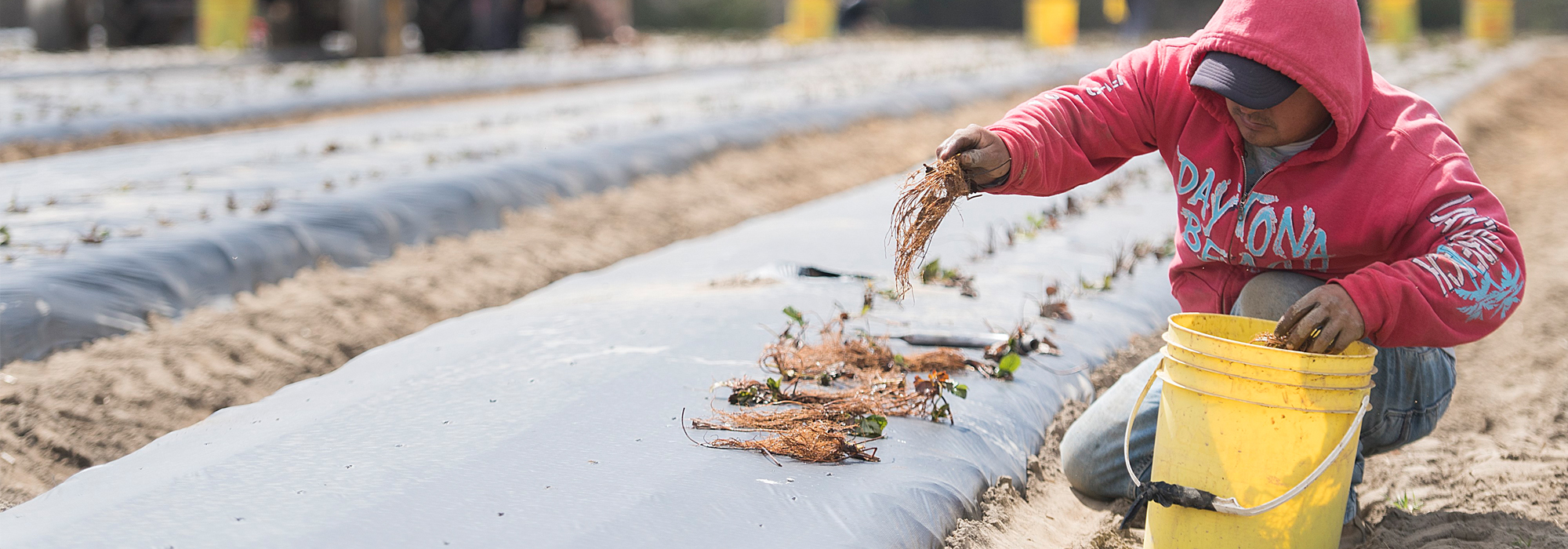The low-paid and precarious positions in industries that are considered essential during the COVID-19 pandemic (sanitation, health care, and those in the food supply chain) are filled with women, recent immigrants, and racialized Canadians. Many of these workplaces are notoriously plagued with exploitative labour practices that, in many ways, contributed to the spread of the virus in the first place. Recent immigrants and racialized Canadians, notably Filipinos and Sudanese Dinka, who work in these industries, for example, meat-packing plants in Brooks, High River and Balzac, Alberta, are at great risk of negative health outcomes during this pandemic.
And, yet, we do not collect the necessary data in Canada on the social determinants of health for racialized minorities. Stories from across the country paint a bleak picture. In April, a 40-year-old Haitian asylum seeker contracted COVID-19 while working as a personal support worker. He died in his home after having been denied refugee status. In Toronto, researchers have recently connected positive COVID tests to neighbourhoods characterized by a higher proportion of visible minorities and recent immigrants, poor housing and low income.
There have been numerous calls to gather disaggregated data on COVID-19, health and race. After initial reluctance, the federal government and some provincial jurisdictions are now considering collecting more demographic data. We join our voices to the call and argue that Canadian governments need data not only on race and health, but also on immigration status during this COVID-19 crisis and beyond.
While collecting data on race will show that people of colour are disproportionately affected by COVID-19, we know that not all racialized Canadians are equally vulnerable to being exposed to this disease. From our work in community health, and gender and politics, we know that despite the best intentions of epidemiological approaches to the pandemic, marginalized groups face barriers to accessing and benefiting from public services. In fact, recent research by the University of Lethbridge’s Eunice Anteh shows that in places like Brooks, newcomers’ health profiles will vary based on numerous factors, including gender, race, language barriers, and the health and social infrastructures in their settlement locations.
We need longitudinal data that intersects the usual factors – gender, age, education, income, for example – with race and immigration profiles to enable policymakers to better understand the pathways and structures that create hierarchies of vulnerabilities within racialized and newcomer communities. This will enable public health officials to work with other stakeholders in eliminating the institutional barriers to health equity for all within our borders.
Intersecting reasons why some are more vulnerable to COVID-19
In Quebec, disparities in COVID-19 infection rates are shaped by the intersection of race, gender, immigration, labour, and public health. Health care workers account for 20 percent of infections, and in the hard-hit Greater Montreal area, up to 80 percent of the aides in long term care facilities are racialized women, mostly Black and Maghrebi. Industries of care are feminized and undervalued despite being critical to preserving the health and safety of the population.
For years workers have complained about these institutions’ chronic understaffing, high patient-to-aide ratios, and unsafe working conditions. As occurred in other provinces, the government subcontracted public services to private entities, with limited public oversight, enabling these institutions to avoid paying employment benefits by privileging part-time over full-time work. This left many health care aides with no other choice but to work at multiple sites to make ends meet. These are the conditions that upended Quebec’s response to COVID-19.
In Alberta, the links between race, immigration, labour, and public health manifested themselves in the food supply chain. Over 1200 COVID-19 cases were linked to the Cargill meat plant. Seventy percent of employees are of Filipino descent, most of whom work as general labourers amongst the lowest-paid employees, and some who have spouses working as health-care aides in Calgary. Public health officials named carpooling and crowded living arrangements as contributing factors to the rapid spread of the virus but overlooked labour practices and socioeconomic conditions that lead to shared living and transportation arrangements in the first place.
The second-largest meat packaging plant in Canada, JBS, is also facing an outbreak. It is the main employer in the city of Brooks, Alberta. A third of the population there are visible minorities, mostly from East Africa, South Asia, and Latin America. Today, JBS employees account for approximately 26 percent of Alberta’s active cases, and over 6 percent of Brooks’ population, one of the highest rates across Canadian municipalities. These outbreaks revealed mistakes and oversight linked to concerns around the food supply chain and showed the price that racialized and marginalized workers pay due to neglect and prioritization of profit over safety.
Temporary foreign workers are also at risk
As the agricultural season enters in full swing and concerns grow about Canada’s food supply chain, we must take stock of employment inequities in how we treat temporary foreign workers (TFWs) and the implications for overall community health and wellbeing. For decades TFWs from the Caribbean and Latin America have taken on work that Canadian often refuse to do, generally because of long working hours, unsanitary bunkhouses, and low wages. Many of these workers are reluctant to speak out about their work conditions given the precariousness of their employment and residency status, which are both tied to their employers.
These conditions, like those of personal service workers or meat plant employees, are not new or even unique to Canada. Across the world, industrialized countries depend on temporary migrant workers to sustain their basic infrastructures. Around the world and in Canada, it is clear that the temporary migration of racialized individuals serves as the backbone of essential services in Canada. From the West Indian Domestic Scheme (1955) and the Caribbean Seasonal Agricultural Workers Program (1966) to our modern TFW program, the utilitarian approach to immigration and the neglect of these populations have resulted in systematic and deep-rooted inequities that weaken health and safety institutions.
A lack of political will to address neglect
Why do Canadians tolerate these types of working conditions that can become public health issues during a crisis like COVID-19? Is it because of who is overrepresented in these fields: female, racialized, and immigrant workers who struggle to get substantive political representation? Some in the broader society rationalize these challenges by saying that newcomers are better off here than where they came from. Others turn a blind eye altogether to these conditions.
In reality, we ignored the working conditions of racialized and immigrant workers who help sustain our health and food supply infrastructures, and way of life.
Yes, we need to gather COVID-19 related data on race and immigration to better address the needs of vulnerable communities that also tend to work in essential sectors. But going forward, we also need long-term changes to what we consider to be health-relevant demographic data.
Provincial healthcare professionals need to pay as much attention to collecting data on race and immigration profiles as they do in collecting data on gender, education, and income. This data needs to feed into national environmental population surveys that will allow public health officers to tie specific demographic markers to health status over time. It will paint a clearer picture of social, economic, and health disparities between various communities and point to needed improvements and progress. This will also enable provincial health officials to identify variations and gaps between federal and provincial jurisdictions. For example, while refugees are resettled and supported by the federal government, their access to health services is the responsibility of the provinces.
Finally, this data should then be the starting point for engagement between public health officers, immigration and labour policy-makers, and relevant stakeholders from relevant industries. Together, they can help develop more robust social and labour protection for racial minorities, newcomers and migrants. We need to be invested in the health and work conditions of racialized and immigrant populations in Canada, not only because, as COVID-19 has demonstrated, safety for them means safety for all, but most importantly because this is what this country says it stands for.
This article is part of the The Coronavirus Pandemic: Canada’s Response special feature.
Photo: A temporary foreign worker from Mexico plants strawberries on a farm in Mirabel, Que., on May 6, 2020. THE CANADIAN PRESS/Graham Hughes









